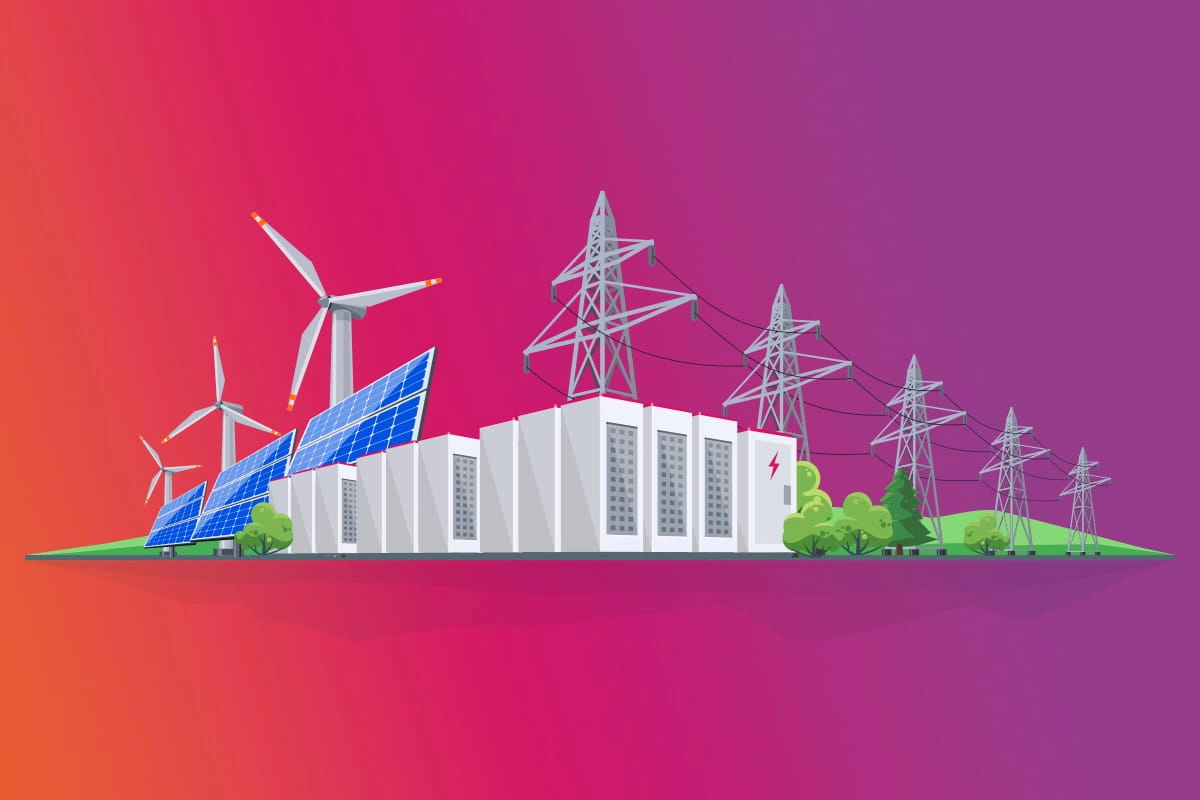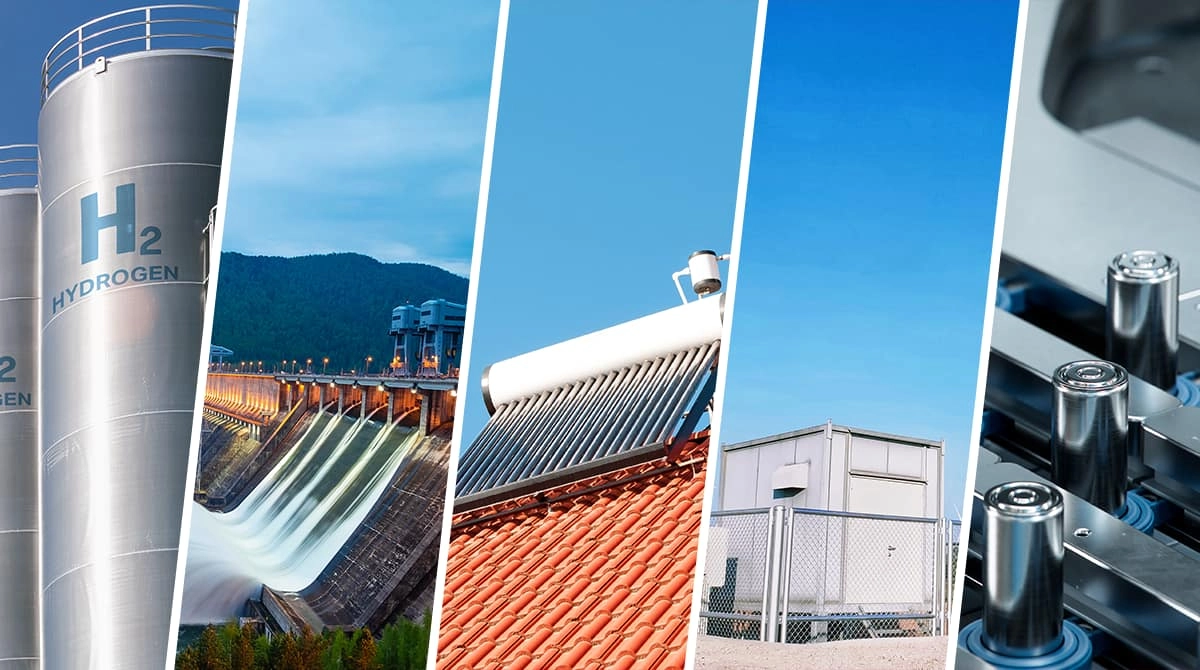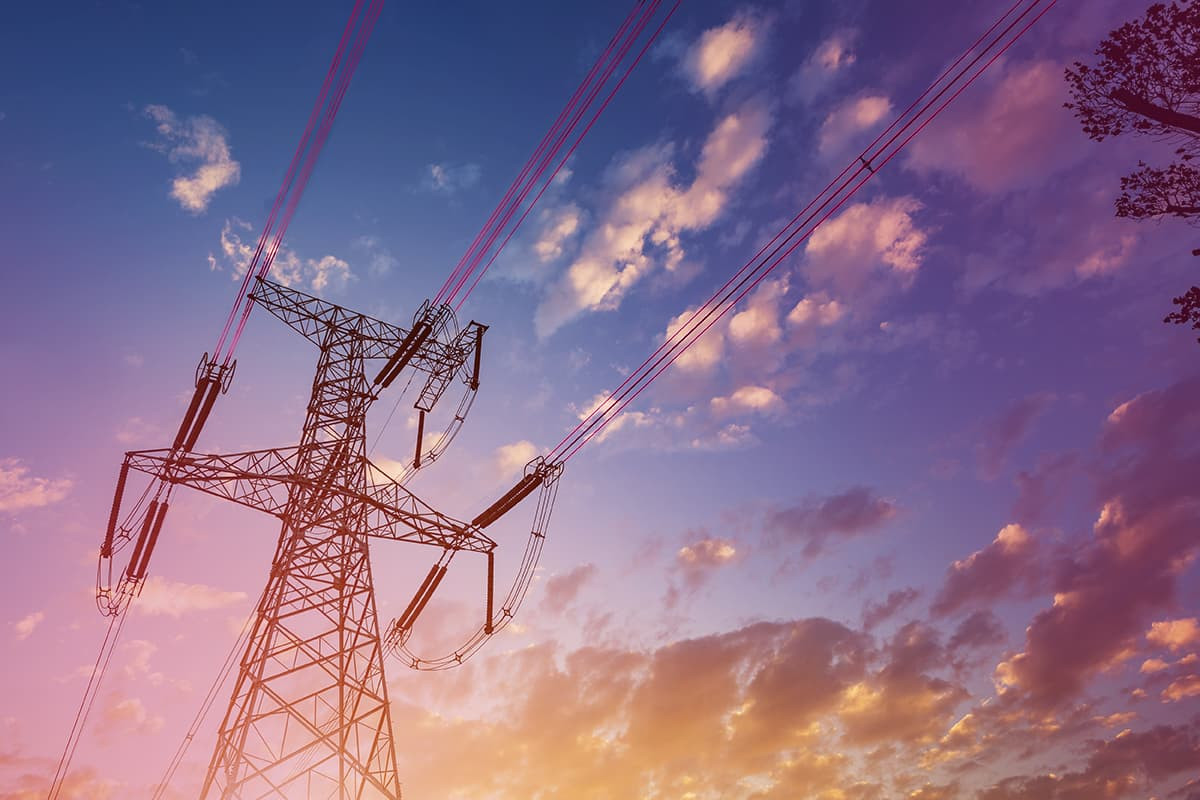
What is in this article?
Energy storage is a rechargeable system comprising one or more interconnected storage batteries, capacitors, inverters and other electrical equipment designed as a fixed set-up for storing electrochemical energy. A fixed energy storage system is typically used to provide electrical power.
So what are the aspects of energy storage? What are the benefits? Let’s see them together.
What Does Energy Storage Mean?
Just as refrigerators store food items without being spoilt for days or even weeks, energy storage provides access to electricity when they need it most, such as during power outages or when there is no sunlight. To this end, we can say that energy storage system is the process of accumulating energy in certain equipment or systems so that it can be used when needed. On a deeper level, it is seen that energy storage helps companies save energy and use the saved energy when demand increases or the grid failures occur.
What are the Benefits of Energy Storage?
One of the best-known advantages of energy storage is that it ensures that consumers are not affected by the changing supply-demand balance. Because the system protects them from challenges such as inconsistent performance or sudden price hikes. On the other hand, energy storage methods are becoming more and more important for sustainable operations in various sectors. That’s because energy storage helps companies accumulate solar, wind and other renewable powers and use it when needed. Energy storage has various benefits across various sectors. All methods allow organizations to proceed to a more sustainable lifecycle.
The main benefits of energy storage are as follows:
Ensures a Long-Term Safety
It is known that the manufacturing and telecommunications sectors need a consistent source of power. Any malfunction or power outage may cause data / time losses for companies. To prevent these problems, energy storage systems present spare power and maintain the reliability of the systems.
Provides a Cost Optimization
It is a known fact that the cost of energy and electricity is increasing day by day. Systems also work differently under different conditions, such as climatic effects. Therefore, it causes big cost fluctuations. Energy storage systems can be optimized to be a main source of power. The method reduces dependence on fuel and generators and reduce carbon emissions. It extends the life of the generator thanks to minimized dependency.
Provides Flexibility
Energy storage systems help companies become more flexible in energy supply. For example, if the demand for electricity suddenly increases, energy storage systems can provide benefits in terms of flexibility and sustainability. In addition, energy storage greatly helps save energy. Flexibility supports companies in reducing their environmental impact. Storing excess energy collected for later use makes renewable energy more efficient and cost-effective.
What are the Commonly used Energy Storage Methods?
There are different types of energy storage options in the energy sector. As the energy storage need increases, as demands become more specific and as innovations develop, available solution alternatives also increase. With the increasing energy storage need, demands becoming more specific, and innovations being developed, solution alternatives are increasing with each passing ay.

Commonly used energy storage methods are as follows:
Hydrogen (Chemical) Storage Method
This method includes hydrogen produced from fossil, renewable energy and other hydrogen-rich chemicals in various energy storage procedures. Hydrogen can be stored as a gas in high-pressure tanks or underground caves, and as liquid and solid in cryogenic (liquefied gases) tanks.
Hydroelectric Pumping Method
The hydroelectric pumping method converts the energy of moving water into electricity. The working principle of such systems is quite understandable and easy. It is defined as the formation of a water cycle between two reservoirs thanks to energy storage in the water which becomes free when left in the lower reservoir and stay in the upper reservoir.
Thermal Storage Method
Thermal storage is basically a system that involves the accumulation of heat exchange that is created in solid, liquid and gaseous matters or air. It involves changes in the storage conditions (for example, from gas to liquid or solid to liquid or vice versa). Thermal energy storage technology involves energy storage with salt and liquid, air or cryogenic (at under zero temperatures) storage. For example, molten salt stores solar power when there is no sunlight. Another example is the ice storage method that reduces the need for compressors in the use of air conditioning in buildings.
Mechanical Storage Method
Mechanical storage can be considered the simplest system that benefits from the kinetic forces of gravity to store energy. However, today’s mechanical storage methods need updated feasibility, which requires the application of advanced technologies to mechanical storage methods. The main options in mechanical storage methods are through energy storage with compressed air systems. Gravitational energy, on the other hand, includes quite a new technology with various options being developed.
Electrochemical Storage Method
Electrochemical storage includes various types of battery energy storage systems. You should know how the battery works to understand these storage systems better. So how does a battery work? Batteries convert chemical energy into electricity. The power of batteries varies from several watts to hundreds of kilowatts. Batteries, the oldest and most widely accessible storage method, are an electrochemical technology that includes one or more cells with positive and negative terminals or anodes.
Electrical Energy Storage Method
Electromagnetic storage involves using the electrical and magnetic features of equipment such as capacitors, supercapacitors, superconducting magnets. An electrical energy storage system stores electricity as a magnetic field thanks to the current flow through superconducting coils It then releases energy by discharging the coils. The energy storage method has the capacity to discharge with the advantage of easy maintenance. It is possible to talk about some other methods.
Electrical energy storage method is commonly used in two ways:
- Capacitors: A capacitor is comprised of two plates and an insulator in the middle. The mechanism stores energy as electrostatic charge. It is usually connected to a charge circuit. When disconnected, it stores energy and can be used to replace battery. This helps provide electricity to protect the power supply during battery replacement.
- Super Capacitors: A super capacitor fills the gap between capacitors and rechargeable batteries. It has a higher energy density compared to a capacitor. It has a shorter time for charge-discharge cycles.
You May Be Interested In

How is Electricity Generated? Different Ways of Electricity Generation
How is electrical energy generated?
Electrical energy is the constant flow of electrons moving inside a conductor. For example, it would be unrealistic to use this method store wind. Because in such a case, you would need to convert the electricity obtained from with to another form (e.g. a chemical substance such as a battery), and then convert it back to electricity when you need it. Please read our blog to answer the question How is electricity generated?

As mentioned above, there is more than one way to store electrical energy. To name them roughly:
- Storing electricity as chemical energy;
- Storing electricity as potential energy;
- Storing electricity as kinetic energy; and
- Storing electricity as thermal energy.
Nuclear and bioenergy fuels such as fossils, charcoal and petrol also provide a highly efficient energy storing process. However, manufacturers often choose renewable energy systems over these methods because of the rapid depletion of energy resources globally and the environmental damages of bioenergy.
Mobile phones are an example for a way of storing electrical energy. To operate a mobile phone, we need to use rechargeable batteries that can easily be converted to electricity and store chemical energy. Another example would be dams to store hydroelectric energy. Water is collected in a reservoir when there is less need and released when there is demand.
The most easily understood method for storing electrical energy might be the solar panel installations on roofs. As a thermal storage method, the system collects the heat, i.e. solar power in the noon with maximum production capacity, and uses it during evening hours when majority of the demand arises. However, one of the most remarkable points is that variations could can be seen at short intervals or production times may not meet the demand because wind and solar power production, which are two of the methods used to store electrical energy, depend on local weather conditions. Therefore, smart energy solutions such as energy storage and solar power systems play a critical role in using energy efficiently and adapt to such changes.
Energy Storage Costs
Energy storage cost is often measured in the relevant currency per kilowatt (kWh) of the storage capacity. However, it is important to remember that costs may vary depending on the specific project. For example, larger scale projects can benefit from lower costs per kWh through economies of scale. Energy storage projects at locations that are far or independent from the grid can cause additional costs due to transportation and installation fees. Type of the battery technology used and the location of the project are among other factors that might affect the costs of energy storage systems. For example, some battery chemicals may cost higher than others, or larger and more complex systems may be required for projects inn areas where energy demand is high or energy supply is variable. These factors can increase the overall cost.
Cost calculation may vary depending on various factors such as the type of the battery technology and location of the project. According to official sources (BloombergNEF), Lithium-ion batteries have the most popular battery energy storage technology used in commercial energy storage systems. As the cost of lithium-ion batteries have been constantly decreasing in recent years, they have become more accessible for businesses and consumers. According to a recent report by Bloomberg NEF, the cost of lithium-ion batteries have decreased by 89% since 2010.
Defining your expectations of the system to be installed is the first step to calculating energy storage costs for commercial or grid-scale projects. You can review the battery technology to get an idea on the energy storage costs. For cost calculation, below are the main factors to consider in the example of energy storage through batteries.
- Duty cycle is the first important factor for your battery costs. You can choose a battery storage system that can meet the relevant performance requirements only by understanding the operating profile of the battery. The more energy you can charge and discharge without bearing additional costs throughout the service life, the lower your main cost calculation will be.
- Battery costs reflect the total preliminary expenses even before the battery starts operating, as well as its ongoing operating and maintenance costs. As a widely accepted technology, Lithium-ion usually has a low capital cost per MWh however, the increasing demand for electric vehicles limit usability and raise prices. If required, costs can contain auxiliary systems such as fire-fighting, air-conditioning and performance monitoring.
- Asset life limits the amount of work that a battery can perform. A battery that can perform 20,000 cycles for 25 years would provide much more energy output compared to a battery that performs 5,000 cycles in 7 years through less energy transmission in every cycle. In the first scenario, your costs per energy unit will be much lower.
- Deterioration will occur as the battery loses capacity in time. Some common grid storage batteries lose around 20% of their capacity in the first ten years of service. This results in a decrease in efficiency. Just like the battery of your mobile phone gets old, less capacity per discharge equals less efficiency, which in turn increases the main cost.
- The round-trip efficiency is a measure of energy transmitted for the energy used to charge the battery, expressed in percentages. The higher this efficiency is, the lower the battery cost will be.Charge price is the cost at which you can charge the battery. Using your own solar panel to charge the battery is more cost-efficient than buying energy from a retailer or a whole-sale market.
What Are the Future Energy Storage Problems?
The fact that renewable energy sources (solar and wind power) are non-continuous is one of the main difficulties in the race against climate change. Since the balance between electricity supply and demand must be maintained at all times, increasing the energy storage capacity to compensate for non-continuous renewable energy sources would be a critical step in freeing the global energy sector from carbon in the future. The annual Energy Talk by the Stockholm Institute of Transition Economies draw attention to the energy storage systems that might arise in the future.
 Transition to renewable energy, adopting green technologies and improving energy storage can be difficult especially for developing economies. Some countries might have to clean up the carbon-dense energy sector at the cost of economic growth. Lithium-ion batteries, the prominent battery technology in today’s world, operate well when it comes to storage for a few hours or days; however, they cannot be stored for longer as they discharge by themselves in time. Therefore, it is predicted that more batteries will be needed in the future to allow storage for sufficiently longer times. Since technological costs are still high, on the other hand, it is still not certain if the current economic environment will support efficient storage in the future or not.
Transition to renewable energy, adopting green technologies and improving energy storage can be difficult especially for developing economies. Some countries might have to clean up the carbon-dense energy sector at the cost of economic growth. Lithium-ion batteries, the prominent battery technology in today’s world, operate well when it comes to storage for a few hours or days; however, they cannot be stored for longer as they discharge by themselves in time. Therefore, it is predicted that more batteries will be needed in the future to allow storage for sufficiently longer times. Since technological costs are still high, on the other hand, it is still not certain if the current economic environment will support efficient storage in the future or not.
Energy storage essentially provides auxiliary power in case of grid interruptions or emergencies. It provides uninterrupted power for critical plants where even a short interruption can lead to serious results, such as hospitals, data centers and telecommunication infrastructures. It is possible to use resources more efficiently and reduce environmentally harmful factors through technologies to be developed on energy storage systems, which have numerous advantages.
You can share this blog with your loved ones to let them know how important energy storage is for our future, and send us your comments and reviews.

 Online Services
Online Services Application Inquiry
Application Inquiry Pay Assurance Fee
Pay Assurance Fee Query Installation Number
Query Installation Number Compensation Fee Inquiry
Compensation Fee Inquiry Automatic Payment Order Inquiry
Automatic Payment Order Inquiry Partnership
Partnership






Leave a Comment